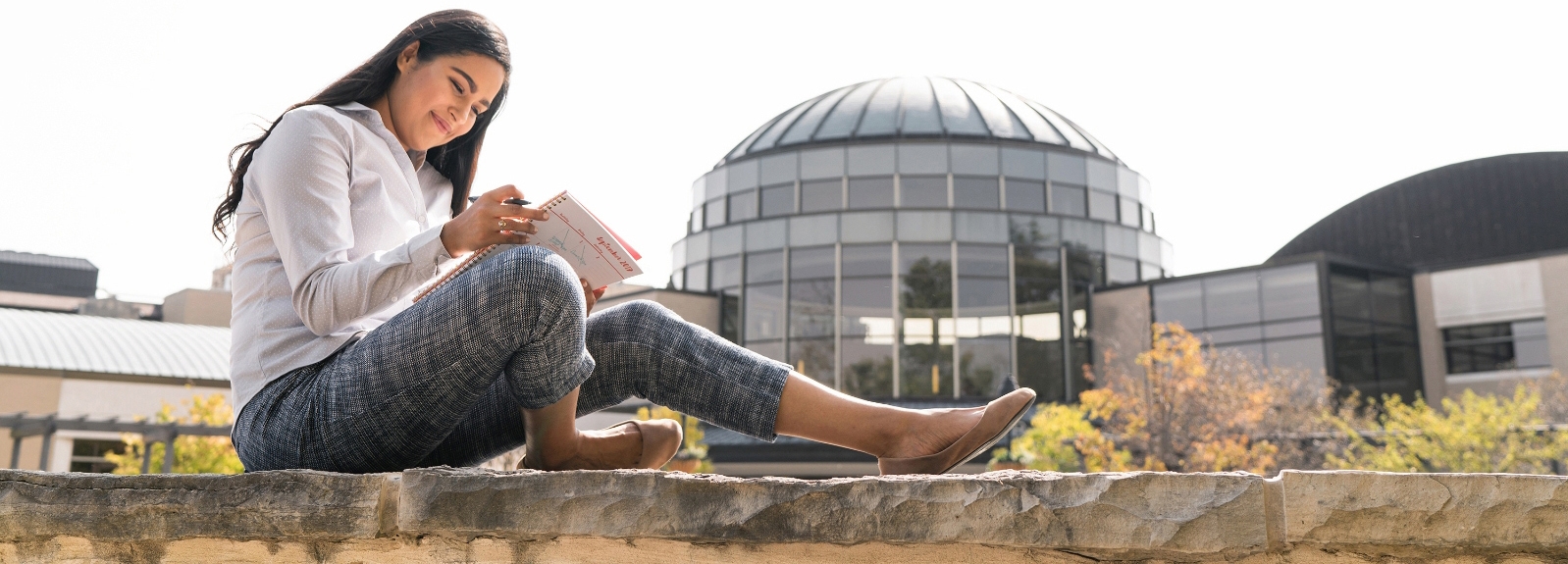Accelerate Faculty
Alverno at Work: Jane Nacker
The patient blinks as he lies in a hospital bed. The quiet sounds of his breathing fill the room, punctuated by a soft cough. Then, a knock on the door. It’s showtime.
Jane Nacker ’81 watches as two Alverno student nurses enter. They aren’t in a real hospital, nor is their patient a live person. Instead, the students are training in Alverno’s Clinical Simulation Center, where they can practice on the high-tech simulator whose functions mimic those of a real person.
Nacker operates the simulator from the adjacent control room and provides the voice for today’s patient, Samuel Fowler. Mr. Fowler, as the student nurses courteously call him, suffers from a nasty wound on his right leg that is getting worse. The students complete a head-to-toe checkup, practicing not only the technical skills of caregiving but also patient communication.
“In simulation, we help them find their nurse voice,” says Nacker, an Alverno nursing alumna herself. This “nurse voice” is confident, yet compassionate. Calm, yet authoritative. Neither too loud nor too fast. “They have to advocate for their patients and take on a leadership role.”
In the control room, Nacker provides Fowler’s answers to the students’ questions, the computer translating her words into his masculine voice. She draws on her 30-plus years as an RN to get inside the patient’s mind. Would he know what a nurse means when she asks to take his vitals? Would he startle if the nurse raised his bed without first warning him?
“I’m not an actor,” Nacker says. “I have empathy for a patient. In my work as a nurse, I know how these patients can feel and what they might say. Many patients don’t know what to expect and feel vulnerable.”
The feedback and assessment that distinguish an Alverno nursing education are an essential component of the learning experience.
“We make it as a real as possible. It’s a wonderful safe place to practice,” Nacker says. “If a student says or does something and the simulator has an adverse or unanticipated reaction, we will talk about it. What would she like to do differently? Then, we can rewind and try again.”
Hands-on practice remains an important part of Alverno nursing education, even during the COVID-19 pandemic. This fall, Alverno welcomed back nursing students to in-person clinical skills instruction, adopting robust and thorough safety measures like avoiding sharing equipment and supplies, practicing social distancing and lots of handwashing, and sanitizing all touch points and shared surfaces after each simulation. And masks are required for all on campus.
“Our priority is to continue providing students with individualized learning and guidance, and to do so in a safe environment,” Nacker says. “It’s great to have them back on campus. Just the other day, I was working with two students who were practicing the tracheostomy suction skill. I was at bedside with them, giving them some really critical feedback. They said they appreciated learning that way, too.”
Before students begin working with the simulators, they learn and practice concrete skills in Alverno’s Clinical Learning Center. They also practice caring for a patient in a simulated home environment. In junior year, they move to the Clinical Simulation Center, which mimics the hospital setting that these students will be heading out into via their off-campus clinical placements.
The extensive hands-on experience that Alverno nursing students gain on and off campus means that by the time these students graduate, they have clearly demonstrated the skills needed to thrive in the real world.
This confidence building and skills mastery are what distinguish an Alverno nurse from others. These are what Nacker took from her Alverno education, and they are what she’s proud to share with her future Alverno sisters through her work in the sim lab.
“We work closely with the students, and we want them to be successful,” she says. “I want them to leave here and have patients say: ‘Wow, where did you go to nursing school?’”

